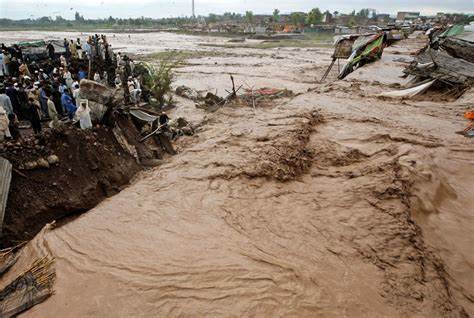Pakistan is one of the most disaster prone countries in South Asia. The country has suffered approximately $18 billion in damages and losses from natural disasters over the past two decades. The 2005 earthquake still resonates in our minds every time a new earthquake is felt. The 2005 earthquake killed at least 73000 people, of which 40000 were children in schools when the earthquake struck. The floods of 2010, and annual recurring floods ever since, continue to remind us of the impacts of climate change.
Road accidents and civil strive also take many lives every year in Pakistan. Hope Beyond Frontiers gives priority to partners who are involved in rescue and recovery operations and training of students and citizens to prevent loss of life.
Pakistan has created the National Disaster Management Authority which is the lead agency at the Federal level to deal with the whole spectrum of Disaster Management activities. It is the executive arm of the National Disaster Management Commission (NDMC) which has been established under the Chairmanship of the Prime Minister as the apex policy making body in the field of Disaster Management.
In the event of a disaster, all stakeholders including Government Ministries/Departments/Organizations, Armed Forces, INGOs, NGOs, UN Agencies work through and form part of the NDMA to conduct one window operations.
Hope Beyond Frontiers will coordinate its emergency response through the partners on the ground in case of a natural or man made disaster.
PAKISTAN: Top 10 natural disasters since 1935
1935 Quetta earthquake
A 7.7 Richter scale earthquake virtually levelled the city of Quetta in the eastern province of Balochistan, then part of British India. Some 60,000 people were killed in one of the deadliest earthquakes to hit South Asia. The epicentre was 4km southwest of the town of Ali Jaan, some 153km from Quetta.

1945 Balochistan earthquake
A 7.8 Richter Scale earthquake hit southwestern Balochistan on 28 November 1945. The epicentre was 98km southwest of the town of Pasni. Apart from massive damage to property, the quake led to a 40-foot tsunami causing the deaths of over 4,000 people.
1950 floods
Monsoon rain in 1950 killed an estimated 2,900 people across the country. Punjab Province, including the city of Lahore, was among the worst hit when the River Ravi flooded. Flooding also affected parts of the southern province of Sindh. Over 100,000 homes were destroyed, leaving around 900,000 people homeless.
1970 East Pakistan cyclone
The Bhola tropical cyclone struck the territory of East Pakistan (now Bangladesh) on 12 November 1970. It was the deadliest tropical cyclone ever recorded and is rated as one of the worst natural disasters in modern times. Up to 500,000 lost their lives, primarily as a result of the storm surge that flooded much of the low-lying islands of the Ganges Delta. The cyclone also gave rise to unrest which contributed to a civil war and the formation in 1971 of the independent state of Bangladesh.
1974 Hunza earthquake
A 6.2 Richter Scale quake hit the Hunza area in northern Pakistan and also the Hazara and Swat districts of the then North West Frontier Province on 28 December 1974. About 5,300 people were killed, 17,000 injured and 97,000 affected. Landslides and rockfalls contributed to the damage. Most of the destruction was centred around the village of Pattan, around 160km north of Islamabad.

2000 drought
At least 1.2 million people in Balochistan were affected by drought, and over 100 died, mostly because of dehydration, according to the government. Millions of animals perished. One of the worst-affected areas was the town of Nushki, close to the border with Afghanistan. The drought lasted over 10 months.
2005 Kashmir quake
A 7.6-Richter scale quake struck the Kashmir region on the India-Pakistan border and parts of northwestern Pakistan on 8 October 2005. According to official figures, at least 73,000 people were killed and more than 3.3 million made homeless. The worst affected areas included Neelum Valley and Bagh District in Pakistan-administered Kashmir and Mansehra Division. A massive international relief effort was launched.

2007 Cyclone Yemyin
At least 380 people were killed in Balochistan, 250 in Sindh and 100 in Balochistan as a result of flash floods triggered by Cyclone Yemyin, which struck coastal areas in early July 2007. Some 350,000 people were displaced,1.5 million affected and more than two million livestock perished.
2010 Hunza Lake disaster
A landslide in January 2010 in Attabad village in Hunza-nagar District in the far north of the country killed 20 people and led to around 40 houses sliding into the Hunza river. Debris from the landslide caused the river to dam, leading to the formation of a large lake which threatened to flood downstream areas. Some 20,000 were forced to leave their homes by June.
2010 floods
The earlier death toll was: 1,600 deaths; over six million affected. Pakistan sought international help to cope with the catastrophe.
